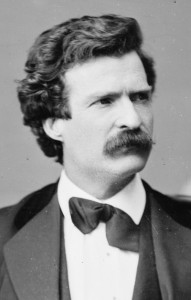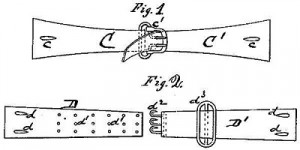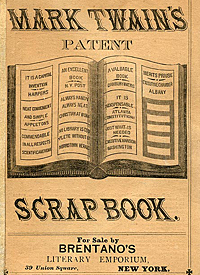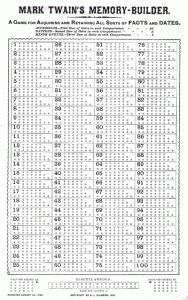
We all recognize Mark Twain as being a well-known American author who is responsible for classic books such as The Adventures of Tom Sawyer and its sequel, Adventures of Huckleberry Finn. But, did you know that Mark Twain also was a patent holder?
Believe it or not, aside from being a famous author, he was an inventor and, in his lifetime, received a total of three patents. On this day in 1871, Mark Twain received patent #121,992 for an ‘Improvement in Adjustable and Detachable Straps for Garments.’

The first of Twain’s three patents was received while he was living in Hartford, Connecticut. His first patent was for an adjustable strap that could be used to tighten shirts at the waist. This adjustable strap was attached to the back of a shirt and fastened with buttons in order to keep it in place and so that it was easy to remove.
Twain’s patent was issued because he wanted to invent a “Better Way” to eliminate suspenders, which he found to be very uncomfortable. His invention was not only intended for shirts; in fact, it also could be used for underpants and women’s corsets.

In addition to his patent for an alternative to suspenders, Twain also received a patent for a self-pasting scrapbook in 1873. Throughout his life, Twain created and kept scrapbooks, filling them with souvenirs, pictures, articles and much more. However, he grew increasingly tired of losing the glue and rock-hard paste. So, rather than stopping what he loved to do, Twain found a ‘Better Way’ to scrapbook when he patented his “self-pasting” scrapbook. This invention, in particular, was very popular and sold over 25, 000 copies.

But Twain’s patent train didn’t stop there; because, in 1885, he received a patent for ‘Memory-Builder,’ a game board that was aimed at developing memory for dates and facts. And, with no surprise, the game and its instructions were written by Twain. That last sentence was filled with sarcasm. Nonetheless, the game and the instructions were glued on the top front and back of the game board and came with a package of different-colored straight pins. In 1891, several models were tested in the market, but they failed to catch the attention of the public.
Even though Twain didn’t find success in his trivia game, he still had a strong belief in the value of the patent system. In fact, in his book, A Connecticut Yankee in King Arthur’s Court, he mentioned the patent office: “…for I know that a country without a patent office and good patent laws was just a crab and couldn’t travel anyway but sideways and backwards.”
With success comes failures and, just like any successful invention, an element of uncertainty and adventure are stepping stones in the invention process. For Mark Twain, he started out as a famous writer, but made the transition into the world of patents and inventions. Twain’s journey further proves that inventors come in all shapes and sizes and from different backgrounds; and, in the end, if you believe in your idea, you can chase your dreams of bringing your invention to life.
Copyright Davison 2013
Sources:
http://www.uspto.gov/news/pr/2001/01-61.jsp
http://classiclit.about.com/od/marktwainfaqs/f/faq_mtwain_inve.htm
http://www.pbs.org/marktwain/scrapbook/
http://www.twainquotes.com/MemoryGame.html
Images:
http://www.twainquotes.com/MemoryGame.html
http://todayinsci.com/Events/Patent/GarmentStraps121992.htm